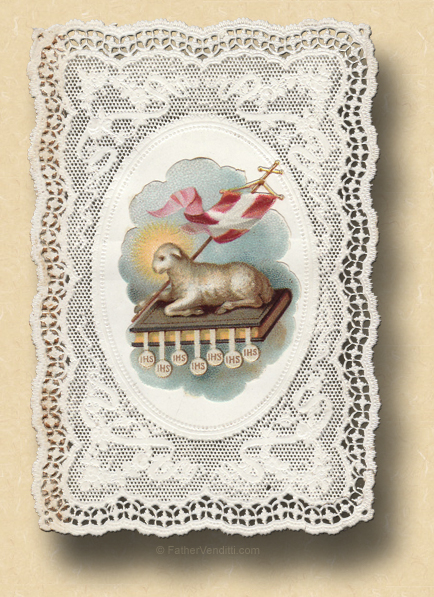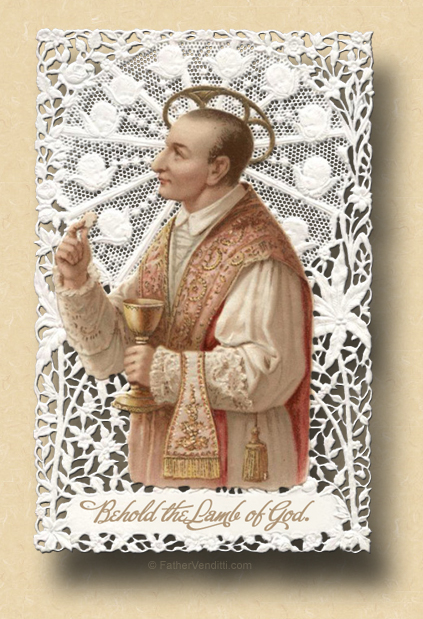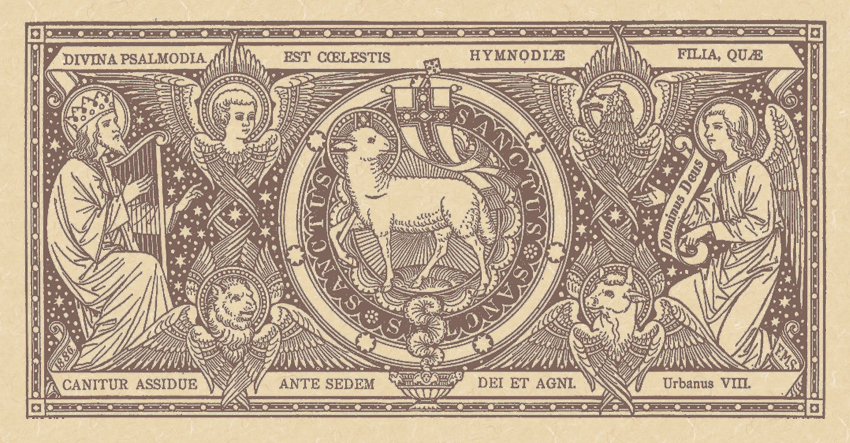A Plurivalent and Divine Reality.*
The Second Sunday of Ordinary Time.
Lessons from the primary dominica, according to the ordinary form of the Roman Rite:
• Isaiah 49: 3, 5-6.
• Psalm 40: 2, 7-10.
• I Corinthians 1: 1-3.
• John 1: 29-34.
The Second Sunday after Epiphany.
Lessons from the dominica, according to the extraordinary form of the Roman Rite:
• Romans 12: 12: 6-16.
• Psalm 106: 20-21.
• John 2: 1-11.
FatherVenditti.com
|
 6:41 PM 1/19/2020 — I was reviewing my files this morning in the hope of finding a past homily I could resurrect for this Sunday, so I could continue my lazy lifestyle, but I couldn’t find one; and, it occurred to me that, since I always had the custom in the past of taking my vacation in January or February, I had not preached on this Sunday in thirty-two years of priesthood. But, thankfully, Pope Saint John Paul II did, and I’d like to begin with this quote from his homily on this Sunday back in 1981: 6:41 PM 1/19/2020 — I was reviewing my files this morning in the hope of finding a past homily I could resurrect for this Sunday, so I could continue my lazy lifestyle, but I couldn’t find one; and, it occurred to me that, since I always had the custom in the past of taking my vacation in January or February, I had not preached on this Sunday in thirty-two years of priesthood. But, thankfully, Pope Saint John Paul II did, and I’d like to begin with this quote from his homily on this Sunday back in 1981:
[We have contemplated Jesus born in Bethlehem and adored by the Shepherds and the Magi,] but this Sunday’s Gospel leads us, once again, to the banks of the River Jordan, where thirty years after that birth John the Baptist is preparing men for His coming. And when the Baptist sees Jesus coming towards him he says, “Behold the Lamb of God, Who takes away the sin of the world” (John 1: 29)…. We have got used to the words “Lamb of God”, but nevertheless they are still wonderful, mysterious words; powerful words (Homily, Jan.18, 1981).
And he’s right. The problem with saying or singing something at every Mass is that the words become so familiar to us that we don’t stop to consider what they mean. Why does John the Baptist, upon seeing Jesus for the first time, say, “Behold the Lamb of God,” when there are so many other things he could have said, such as, “There’s the Messiah,” or “There is the Son of God,” or even “Hey, look at that guy!” Why choose the words, “Lamb of God”?
Well, let’s consider what these words would have meant to the Jews of our Lord’s time. They knew the meaning of the paschal lamb from the Book of Exodus, its blood shed on the night of Passover and used to mark the doorposts of Jewish homes so that the angel of death would pass them by. They were also familiar with the familiar words of the Prophet Isaiah, who had compared the sufferings of the Servant of God, the Messiah, with the sacrifice of a lamp (cf. Isaiah 53: 7). And in our Lord’s own time, a lamb was sacrificed in the Temple to recall each year both their freedom from slavery and the covenant that God had made with Abraham. And all of this, as we know, was arranged by God as a promise and a prefiguring of the true Lamb, Christ, the Victim in the sacrifice of Calvary on behalf of all mankind.  In the Preface for Easter Sunday, the Roman Missal says, “He is the true Lamb who has taken away the sins of the world; by dying He has destroyed our death, and by rising restored our Life (Preface of Easter I). Saint Paul would later say to the first Christians at Corinth that Christ, “our paschal lamb has been sacrificed” (I Corinthians 5: 7), and he invites them to a new life; a holy life. In the Preface for Easter Sunday, the Roman Missal says, “He is the true Lamb who has taken away the sins of the world; by dying He has destroyed our death, and by rising restored our Life (Preface of Easter I). Saint Paul would later say to the first Christians at Corinth that Christ, “our paschal lamb has been sacrificed” (I Corinthians 5: 7), and he invites them to a new life; a holy life.
These words of John the Baptist have been widely commented on by Scripture Scholars and spiritual writers. One of them, the Spanish priest Garcia Moreno, tells us that “Lamb of God” is a title “rich in theological content. It is one of those resources of human language that attempts to express a plurivalent and divine reality. But it would be nearer the truth to say that it is one of those expressions coined by God, in order to reveal something very important about Himself.”**
“Behold the Lamb of God, Who takes away the sin of the world” announces the Baptist, and “sin of the world” means all types of sin: not only the original sin with which we are born, but also all our own personal sins. That one simple sentence is the foundation of the virtue of Hope, announcing for all eternity that we have the ability to overcome our sinful nature and achieve everlasting salvation. At every Mass, before administering Holy Communion to the faithful, the priest pronounces the words of the Baptist as he shows Jesus to the people, just as John showed Jesus for the first time to his disciples: “Behold the Lamb of God….” But what’s even more important than these words of John the Baptist that the priest repeats as he shows us our Blessed Lord, are the words that we say in response, paraphrased from our Lord’s encounter with the centurion who’s servant lay dying (cf. Matthew 8: 8): “Lord, I am not worthy that You should enter under my roof, but only say the word and my soul shall be healed.” Those are serious words. Only the person who has embraced the virtue of Hope can sincerely speak those words, because those words acknowledge, first of all, that someone recognizes that he or she is not worthy to receive the Body and Blood of our Lord, but at the same time knows he can’t make himself worthy, but can only be made worthy by Christ. This requires frequent confession, it requires the humility to honestly recognize one’s sins, and most of all it requires a strong and vibrant faith.
Let’s resolve to use the opportunity of today’s Mass to renew our devotion to our Blessed Lord in the Blessed Sacrament. Let’s resolve to make sure that, whenever we approach Him in Holy Communion, we will make sure we’re worthy to receive Him. Let’s make our own the Prayer Over the Offerings of today’s Mass: “Grant us, O Lord, we pray, that we may participate worthily in these mysteries, for whenever the memorial of this sacrifice is celebrated the work of our redemption is accomplished.”

* Plurivalent: this unfamiliar word is derived from chemistry, and is a synonym of "valence." The valence or valency of an element is a measure of its combining power with other atoms when it forms chemical compounds or molecules. The concept of valence was developed in the second half of the 19th century and was successful in explaining the molecular structure of inorganic and organic compounds. The quest for the underlying causes of valence led to the modern theories of chemical bonding, including the cubical atom (1902), Lewis structures (1916), valence bond theory (1927), molecular orbitals (1928), valence shell electron pair repulsion theory (1958), and all of the advanced methods of quantum chemistry.
** A. Garcia Moreno, Christ, Son of God and Redeemer of Man, Pamplona, 1982.
|

